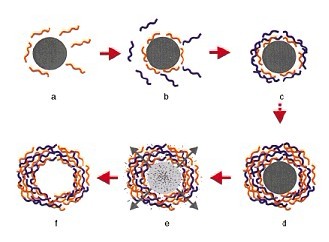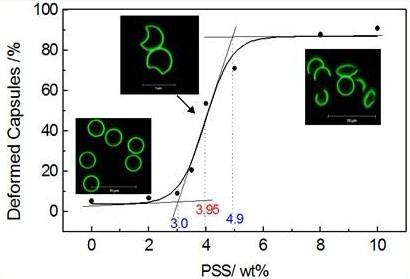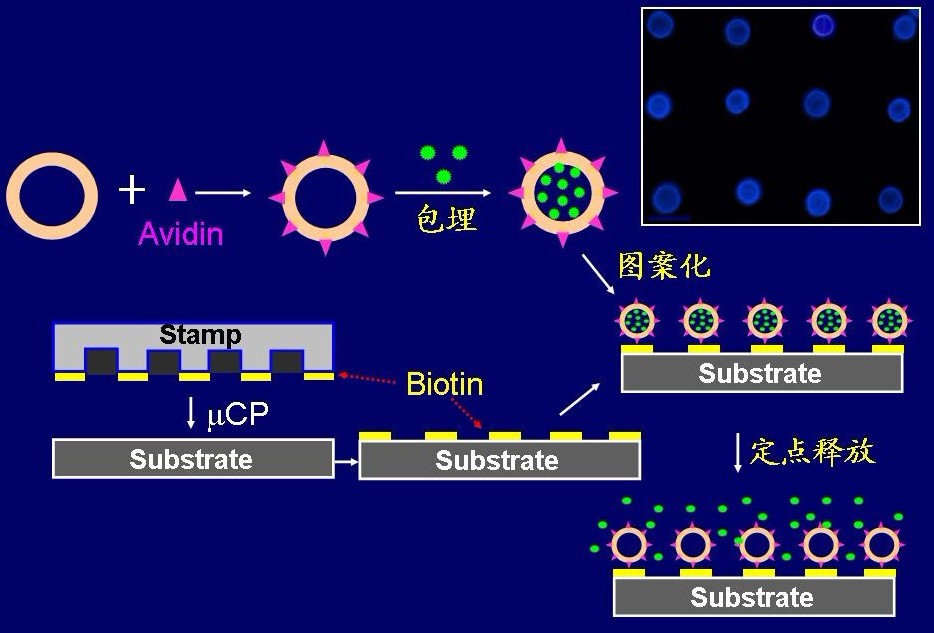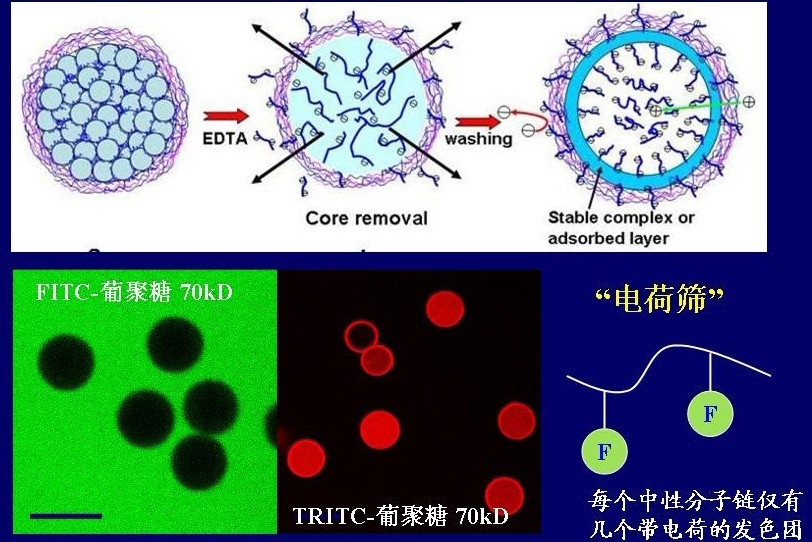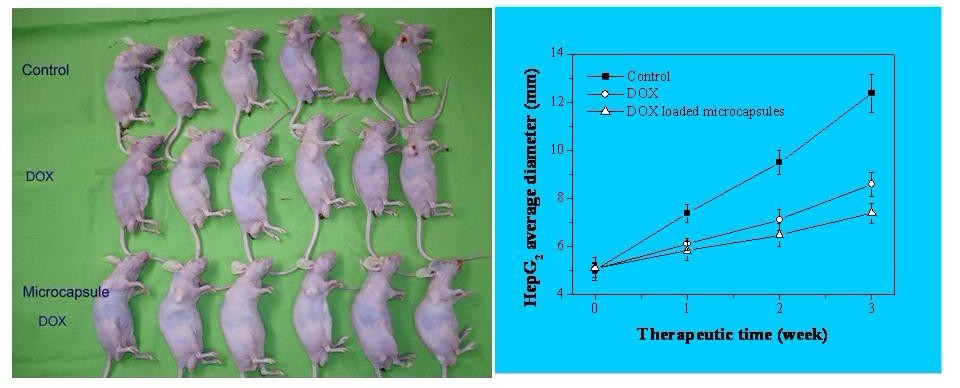Research
| Layer-by-layer Assembled Microcapsules |
| Time:2011-12-27 18:02 Source:未知 Author:admin Click: |
Hollow capsules are of great interest due to their potential applications and fundamental importance as new colloidal structures in areas such as medicine, catalysis, cosmetics as well as biotechnology.Recently, a novel type of hollow microcapsules has been fabricated by means of layer-by-layer (LbL) assembly of oppositely charged polyelectrolytes on colloidal templates, followed by core removal. Using this technique, the capsules with well-controlled size and shape, finely tuned wall thickness and variable wall compositions have been produced. Moreover, microcapsules with customized physicochemical properties can be obtained by incorporation of one or more functional species such as biomacromolecules, lipids, photoactive dyes,nanoparticles, as well as multivalent ions onto the capsule walls or into the capsule interiors. The LbL microcapsules with integrated multifunctionalities have high capacity for loading a wide range of substances and sensitive response to diverse stimuli, thus they are highly attractive for the bio-related applications. Thus, in our group, we are focusing on the fabrication and functionalization of the LbL capsules and their potential biomedical applications.
Fabrication of capsules through LbL method
In our group, we optimized the fabrication conditions for the LbL capsules and obtained the capsules with more than 90% integrity. And then we measured the mechanical properties of the obtained capsules through the osmotic pressure method and studied their stimuli-responsive properties, such as ionic, thermal, as well as pH. We further used chemical cross-linking to tune the properties of the capsules.It is known that different driving forces bring substantial differences of the microcapsules in terms of their chemical and physical structures, stability and stimuli-response, and inevitable their functionality and applicability. Recently, in our group, the multilayer hollow microcapsules based on covalent bonding, and guest-host interactions have been fabricated, which show unique properties.Nowadays great interests have been attracted by integration specific biofunctionality onto the capsule surface for targeting. The concept is recently demonstrated in our group by targeting the microcapsules on a patterned surface by electrostatic interaction or recognition between biotin and avidin.
Measure the Mechanical property of capsules through osmotic pressure method
Microcapsule Arrays
For most of the potential applications of the LbL microcapsules such as drug delivery, catalysis, cosmetics, biotechnology and nutrition, the controlled loading and release of a variety of substances is basically required. The spontaneous deposition is based on a mechanism of high affinity of the preloaded substanceswith the substances of interest. By pre-filling the microcapsules with charged polyelectrolytes, loading of oppositely charged substances with higher concentration in the capsule interiors can be similarly achieved. The encapsulated anti-cancer drugs by the spontaneous deposition method show a better ability of tumor inhabitation than the same dosage of free drug in the in vivo test.
Capsules with charge-controlled permeation property
The in vivo test of the encapsulated anti-cancer drug(DOX) Now works on mimicking the functionalities of cells such as biochemical reactions in a confined space and selective ion transportation are emerging, yet still more efforts should be given to this direction. For example, the LbL microcapsules mimicking the deformability of red blood cells by shape design and interior and surface engineering would be very helpful for drug delivery. Finally, drug delivery vehicle is one of the most possible applications of the LbL microcapsule so far, as revealed by those many existing studies. However, in our opinions, there are still many challenges remained, including optimization drug release profile for a specific therapy or disease treatment, the integration of biofunctional moieties onto the microcapsule surfaces aiming at target delivery, and the biocompatibility in both the tissue and blood contacting levels.
|

